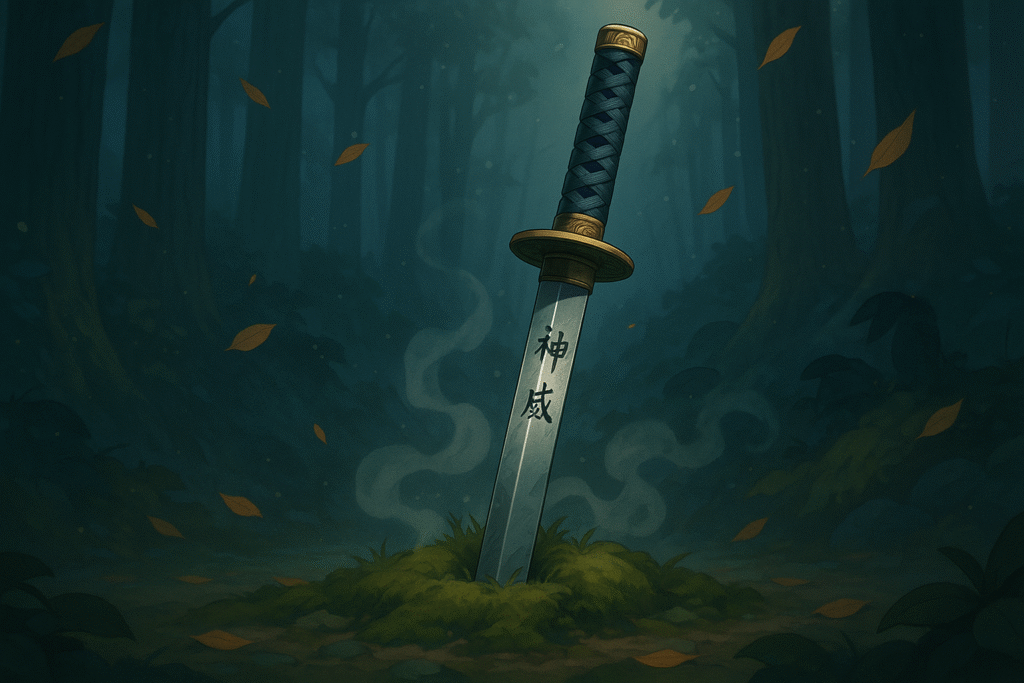When planning your dream trip to Japan, you likely envision serene temples, bustling city streets, and picturesque cherry blossom scenes. While Japan consistently ranks among the world’s safest countries for travelers, venture beyond urban areas and you’ll encounter wildlife that demands respect and caution. The most dangerous animals in Japan aren’t mythical yokai from folklore—they’re very real creatures that inhabit the diverse ecosystems spanning from Hokkaido’s snow-covered mountains to Okinawa’s tropical shores.
As someone who has spent years exploring Japan’s wilderness areas, I’ve compiled this essential guide to help you understand and safely coexist with Japan’s most formidable wildlife. Whether you’re planning a hiking expedition in bear country or simply want to be informed about potential encounters during your travels, this knowledge could prove invaluable.
Want to learn Japanese faster?
Book a free 15-minute call to create your personalized study plan. Get expert tips, guidance, and answers to all your questions. One-on-one!
Understanding Wildlife Safety in Japan
Japan’s unique geography—spanning multiple climate zones across its archipelago—creates habitats for a surprising variety of potentially dangerous animals. Despite Japan’s reputation for safety, wildlife encounters resulting in injury or death do occur annually, particularly in rural and wilderness areas where human and animal territories increasingly overlap.
The most dangerous animals in Japan typically avoid human contact when possible. Most dangerous encounters happen when animals feel threatened, are protecting their young, or when humans unknowingly enter their territory. With proper awareness and precautions, you can significantly reduce your risk while exploring Japan’s natural beauty.
The 7 Most Dangerous Animals in Japan
1. Brown and Black Bears (ヒグマ・ツキノワグマ)
Without question, bears rank among the most dangerous animals in Japan, with two native species presenting different risks to humans.
The Ussuri brown bear (known as “higuma” in Japanese) dominates Hokkaido’s wilderness as Japan’s largest predator, reaching heights of 2.7 meters when standing and weighing up to 400kg. Their immense size and strength make confrontations potentially deadly. The 1915 Sankebetsu incident remains Japan’s deadliest bear attack, claiming seven lives when a single brown bear terrorized a remote village.
The smaller Asian black bear (tsukinowaguma) inhabits Honshu’s mountainous regions and occasionally Shikoku. Though typically shy, these bears become increasingly aggressive when food sources dwindle, especially before hibernation. Recent years have seen rising bear encounters as habitat loss pushes them closer to human settlements.
Bear Safety Tips:
- Make noise while hiking (bear bells are sold at outdoor shops)
- Travel in groups when possible
- Carry bear spray in high-risk areas
- If encountered, never run—back away slowly while speaking in a calm voice
- In case of attack, play dead by protecting your neck and head
For travelers planning extensive hiking, our Japan Trip Budget Guide includes information on purchasing essential safety equipment like bear bells without breaking the bank.
2. Giant Hornets (スズメバチ)
Japan’s giant hornets (suzumebachi) have earned their ominous nickname “murder hornets” for good reason. These formidable insects—the world’s largest hornets—feature a 6mm stinger capable of delivering potent venom that dissolves human tissue and can trigger anaphylactic shock.
With wingspans reaching 6cm and distinctive yellow-orange heads contrasting against black bodies, these hornets cause 30-50 fatalities annually in Japan. Most deaths result from anaphylactic shock after multiple stings, particularly when victims disturb nests unknowingly.
Peak hornet season runs from late summer through autumn, coinciding with Japan’s popular hiking season. They typically nest in forested mountain areas but occasionally establish colonies near human settlements.
Hornet Safety Tips:
- Avoid wearing sweet-smelling perfumes or bright colors in forested areas
- If you spot a hornet, remain calm and move away slowly
- Never swat at hornets as aggressive movements trigger attacks
- If stung, seek medical attention immediately as reactions can escalate rapidly
3. Venomous Snakes (毒蛇)
Among the most dangerous animals in Japan are its venomous snakes, with three species responsible for most serious envenomations:
The habu viper (Okinawa’s infamous pit viper) primarily inhabits the Ryukyu Islands. Its hemotoxic venom destroys tissue and can cause permanent damage even with treatment. Approximately 50 bites occur annually in Okinawa, with habu known to enter homes hunting prey.
The mamushi (Japanese pit viper) represents the most widespread venomous snake in Japan, responsible for thousands of bites yearly with a 1% fatality rate. These well-camouflaged vipers inhabit grassy areas across the main islands.
The yamakagashi (tiger keelback) possesses potent venom but rarely bites humans due to its docile nature. However, its toxin can cause severe internal bleeding when bites do occur.
Snake Safety Tips:
- Wear closed footwear and long pants when hiking
- Use a walking stick to probe vegetation before stepping
- Stay on established trails
- If bitten, immobilize the affected area and seek immediate medical care
For travelers exploring Okinawa’s natural areas, understanding local wildlife is essential. Our guide to Japan Uji includes insights on regional differences in Japan’s wildlife habitats.
4. Venomous Marine Life (海の危険生物)
Japan’s coastal waters harbor several dangerous marine species, with the habu-kurage (viper box jellyfish) standing out as particularly hazardous. These nearly transparent jellyfish appear in Okinawan waters between July and September, with tentacles containing thousands of microscopic stingers.
Contact with these tentacles triggers immediate, excruciating pain that can lead to cardiac arrest in severe cases. Several drownings have been attributed to victims going into shock after envenomation.
Other concerning marine animals include:
- Portuguese man-o-war (technically not jellyfish but colonial organisms)
- Stonefish (camouflaged fish with venomous spines)
- Blue-ringed octopus (small but carrying enough tetrodotoxin to kill 26 adults)
Ocean Safety Tips:
- Swim at beaches with protective nets during jellyfish season
- Wear protective clothing like rash guards
- Check with local authorities about current marine hazards
- If stung by a box jellyfish, immediately rinse with vinegar (not fresh water)
5. Wild Boars (イノシシ)
The Japanese wild boar (inoshishi) might seem unassuming but ranks among the most dangerous animals in Japan due to its unpredictable aggression and formidable physical capabilities. These stocky mammals can reach speeds of 40km/h, wielding sharp tusks capable of inflicting deep lacerations.
Aggressive encounters typically occur when boars feel cornered or when protecting young. Urban encounters have increased as habitat loss pushes boars into suburbs and even city parks, particularly in western Japan. Kyoto, Kobe, and Hiroshima regularly report boar incursions into residential areas.
Wild Boar Safety Tips:
- If encountered, maintain distance and find higher ground (they can’t climb well)
- Never approach piglets, as mothers are extremely protective
- Store food securely when camping
- Move slowly and quietly away without turning your back
6. Ticks (マダニ)
Though small, ticks represent an often-overlooked yet significant danger among Japan’s wildlife. Various species carry potentially fatal diseases including:
- Japanese spotted fever
- Severe fever with thrombocytopenia syndrome (SFTS)
- Novel Yezo virus
- Japanese encephalitis
SFTS is particularly concerning with a mortality rate approaching 30%. Recent years have seen record-breaking case numbers, particularly affecting Japan’s elderly population who often work in rural agricultural settings.
Tick Safety Tips:
- Wear long sleeves and pants when hiking
- Apply insect repellent containing DEET
- Perform thorough tick checks after outdoor activities
- If you find an attached tick, seek medical help for proper removal
7. Pufferfish (フグ)
Unlike other entries on this list, the fugu (pufferfish) poses a danger only when consumed—but what a danger it is. This Japanese delicacy contains tetrodotoxin, a neurotoxin 1,200 times more potent than cyanide, with no known antidote.
Fugu preparation requires specialized training and licensing. Despite strict regulations, several poisoning cases occur annually, usually involving amateur preparation. Symptoms progress from tingling to paralysis and potentially respiratory failure.
Fugu Safety Tips:
- Only consume fugu at licensed restaurants displaying certification
- Consider farm-raised fugu (some varieties are now bred to be toxin-free)
- Understand that no amount of alcohol neutralizes the toxin
- Know that the highest risk parts (liver, ovaries) are legally banned from serving
For culinary adventurers, our guide to Famous Japanese Ramen Bowls offers safer yet equally authentic Japanese food experiences.
Ready to pass the JLPT N5 fast?
Master the basics of Japanese with our complete JLPT N5 Study Guide. Step-by-step roadmap, study methods, and mock tests. All in one guide!
Wilderness Safety in Japan: Essential Preparation
Understanding the most dangerous animals in Japan is just the first step in ensuring safe wilderness experiences. Here are additional preparations worth making:
Before Your Trip
- Research wildlife present in your specific destination
- Download safety apps with offline functionality
- Consider travel insurance covering wilderness evacuation
- Learn basic emergency phrases in Japanese
Essential Gear
- Bear bell (kuma suzu)
- Insect repellent with DEET
- First aid kit including compression bandages
- Emergency contact information
Understanding Warning Signs
Many Japanese hiking trails feature warning signs indicating the presence of dangerous wildlife. Familiarize yourself with these common symbols:
- Bear silhouette (熊出没注意 – kuma shutsubotsu chūi)
- Snake warning (蛇注意 – hebi chūi)
- Hornet warning (蜂注意 – hachi chūi)
For comprehensive preparation before wilderness adventures, download our free Japan Outdoor Safety Guide from our resources page.
Frequently Asked Questions About Dangerous Animals in Japan
What is the most dangerous animal in Japan?
Bears are the most dangerous animals in Japan based on fatality statistics, with the Ussuri brown bear of Hokkaido causing the most serious attacks.
Are there dangerous spiders in Japan?
Yes, the redback spider (introduced from Australia) has established populations throughout Japan, including Tokyo. While painful, bites rarely prove fatal with proper medical attention.
Should I worry about wildlife during city visits in Japan?
Urban visitors rarely encounter dangerous wildlife, though giant hornets occasionally build nests in city parks, and wild boar sightings in suburban areas have increased in recent years.
When is bear activity highest in Japan?
Bear encounters peak during early spring when bears emerge hungry from hibernation and during autumn when they actively forage before winter. Hikers should exercise extra caution during these periods.
Are there sharks in Japan’s waters?
Yes, several shark species inhabit Japanese waters, including bull sharks and great whites. However, attacks are extremely rare, with just 14 recorded fatalities since 1962.
Respect and Coexistence
While this article focuses on the most dangerous animals in Japan, it’s crucial to remember that human activities cause far more harm to wildlife than vice versa. As visitors to Japan’s natural spaces, we bear responsibility for minimizing our impact and respecting wildlife habitats.
Most dangerous encounters result from human behavior—approaching too closely for photographs, improperly storing food, or venturing into clearly marked restricted areas. By acting responsibly and preparing adequately, you can safely enjoy Japan’s magnificent wilderness areas while preserving them for future generations.
Understanding the most dangerous animals in Japan enhances rather than diminishes the experience of exploring this beautiful country. Armed with knowledge and proper precautions, you can confidently venture beyond tourist centers to discover Japan’s natural wonders—just remember to bring your bear bell!
Have you encountered wildlife during your travels in Japan? Share your experiences in the comments below!




